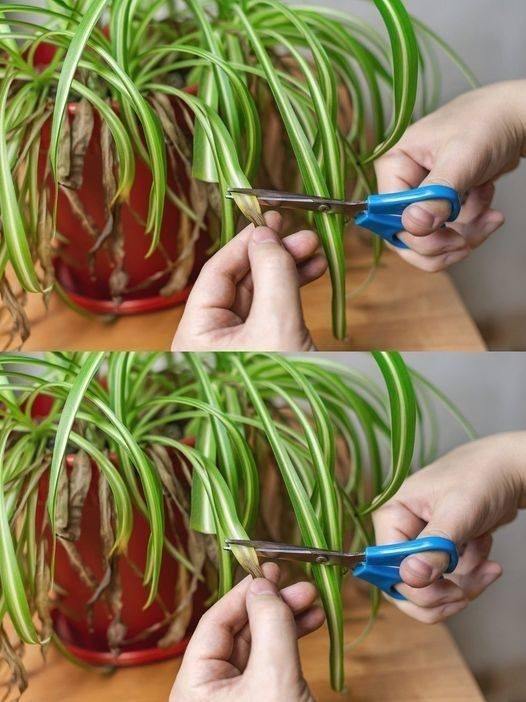ADVERTISEMENT
### The Health Benefits of the Falangio
In addition to purifying the air, the presence of the Falangio in your home can offer numerous health benefits. These benefits extend beyond just cleaner air and can have a direct impact on your physical and mental well-being.
#### 1. **Reduced Stress and Improved Mental Health**
Research has shown that having plants in indoor spaces can help reduce stress, anxiety, and mental fatigue. The calming presence of plants, along with their natural beauty, can create a peaceful atmosphere that promotes relaxation and mental clarity. The Falangio, in particular, is known for its ability to brighten a room with its lush, green foliage, creating a calming environment that helps alleviate stress and improve overall mood.
One study published in the *Journal of Physiological Anthropology* found that indoor plants, including the spider plant, can help reduce physiological responses to stress. Simply being in the presence of plants can lower blood pressure and heart rate, making you feel more at ease.
#### 2. **Improved Productivity and Focus**
In addition to reducing stress, plants like the Falangio have been shown to improve productivity and concentration. Studies have demonstrated that office workers and students who have plants in their workspaces are more focused, have higher productivity levels, and experience fewer mental distractions. By adding a few spider plants to your workspace or study area, you may find that you are able to concentrate better and work more efficiently.
#### 3. **Healthier Respiratory Function**
Because the Falangio is effective at purifying the air by removing toxins and chemicals, it can help promote better respiratory health. Breathing cleaner air can reduce the risk of respiratory conditions such as asthma, bronchitis, and allergies. If you have trouble with breathing in dry or polluted environments, adding spider plants to your home may provide some relief by creating a healthier, fresher atmosphere to breathe in.
### How to Care for Your Falangio (Spider Plant)
The Falangio is an incredibly easy plant to care for, making it an ideal choice for beginners and seasoned plant enthusiasts alike. Not only is it low-maintenance, but it is also highly resilient, meaning it can survive in a variety of environments. Here are some tips to help you take care of your spider plant and ensure it thrives:
#### 1. **Light Requirements**
Falangio plants prefer bright, indirect light, but they can also tolerate lower light levels, making them perfect for homes or offices with less sunlight. If you place them in direct sunlight, the leaves may become scorched, so it’s best to keep them in a location where they can receive diffused light.
#### 2. **Watering Needs**
Spider plants prefer evenly moist soil but can also tolerate some dryness. It’s important to avoid overwatering, as this can lead to root rot. To prevent overwatering, allow the top inch or two of soil to dry out before watering again. In the winter, you can reduce the frequency of watering since the plant’s growth slows down.
A good rule of thumb is to water your Falangio once a week during the warmer months and once every 10-14 days during the colder months. Always check the moisture level of the soil before watering.
#### 3. **Soil Requirements**
Spider plants thrive in well-draining soil. A general potting mix will work just fine, but it’s a good idea to add some perlite or sand to improve drainage. This will help prevent water from sitting in the soil for too long, which can lead to root rot.
#### 4. **Temperature and Humidity**
Falangio plants thrive in average room temperatures ranging from 60°F to 75°F (15°C to 24°C). They prefer moderate humidity, but they are adaptable and can handle dry air. If you live in a particularly dry climate or want to boost humidity around the plant, you can occasionally mist its leaves with water.
#### 5. **Propagation**
One of the most exciting aspects of the spider plant is its ability to reproduce easily. The plant produces small “babies” or plantlets on long, trailing stems that can be cut off and potted to grow new plants. Simply cut the plantlet from the main stem and place it in a glass of water until roots begin to form. Once the roots have developed, you can transfer the plantlet into soil to grow into a new spider plant.
#### 6. **Pruning and Maintenance**
Falangio plants are relatively low-maintenance, but they may occasionally need a little pruning to keep them looking their best. Trim away any yellow or brown leaves to encourage new growth and maintain the plant’s appearance. If the plant becomes too leggy or the leaves start to look too long, you can also trim back the stems to promote fuller, healthier growth.
### Conclusion: The Falangio—A Simple Solution for Cleaner Air and Better Health
The **Falangio**, or spider plant, is a versatile and beneficial houseplant that provides numerous advantages for anyone looking to improve the air quality and overall health of their home. From its ability to purify the air by removing harmful chemicals and toxins to its aesthetic appeal and easy care requirements, the spider plant is a fantastic addition to any living space.
By introducing the Falangio into your home, you can create a healthier, fresher environment while enjoying the many benefits that plants offer, such as improved mood, reduced stress, and better respiratory function. Whether you are a plant enthusiast or a novice, the spider plant’s ease of care and remarkable ability to purify the air make it an excellent choice for any indoor space.
So, if you are looking to improve the air quality in your home and promote better health, consider adding a Falangio to your collection of houseplants. It’s not just a plant—it’s a natural air purifier that can make a big difference in the quality of the air you breathe.
